
The secret to being the sharpest pencil in the innovation drawer is an R&D organization that thinks fast and plans ahead—from start to finish.
"I will build a car for the great multitude. It will be large enough for the family, but small enough for the individual to run and care for." - Henry Ford
“People are inherently creative. They will use tools in ways the tool-makers never thought possible." - Steve Jobs
"There was much, much more business out there in small-town America than anybody, including me, had ever dreamed of." - Sam Walton
Ford, Apple, and Wal-Mart were all driven by charismatic leaders whose insights defined innovation in the 20th century.
These visionaries understood that the future must be different from the past.
When companies are young, visionary thinking is easy to instill in marketing, operations, and R&D.
But as they mature, this zeal often gives way to the mundane and managing the day-to-day business.
Today, consumer packaged goods (CPG) companies in particular are faced with tough competition, flat R&D budgets, private labels that can easily and cheaply clone products, and fickle consumers who crave the latest and greatest products.
No wonder these companies are battling the "illusion of innovation" and looking to, well, reinvent innovation.
In this challenging market, how do leading companies stay on top?
We recently profiled 10 of the world's largest CPG companies to evaluate their innovation mettle and determine how their R&D organizations have adapted to today's market pressures. Our goal was simple: find out how leaders are reinventing innovation.
And our focus was not on one-hit wonders but on companies that are likely to sustain innovation over time.
Sustainable Innovators
What makes some CPGs better than others at maintaining innovation over time?
Our findings suggest that these companies, we call them "sustainable innovators," apply foresight to the R&D function and avoid the pitfalls that take down even the most potent competitors.
Essentially, they think of innovation as an end-to-end value chain that is focused on the future - from idea management, product development, and launch to managing the entire life cycle of every product.
Sustainable innovators share three important characteristics:
Pursuit of breakthrough, consumer-driven innovation
Innovation projects generally fall into five categories:
- Breakthrough,
- Line extensions,
- Refresh,
- Productivity,
- and Other.
For sustainable innovators, a substantial boost in sales does not come from simply refreshing existing products or line extensions. It comes from breakthrough innovations that tap into unmet consumer needs.
Successful innovation decisions are driven by consumer needs and lead to either new products or significantly expanded product categories.
Yet few firms are set up for breakthrough innovations.
Leading companies invest roughly 15 percent on breakthrough projects and an estimated 60 percent on line extensions or refreshing current products.
One reason is that launching new products is risky.
Only 20 percent of new products achieve more than $7.5 million in year-one sales, and less than 3 percent achieve more than $50 million in sales the first year (see figure 1).
Another reason is that getting to a breakthrough innovation can require multi-year commitments.
But with few incentives to pursue these, and most financial targets designed to be met within one year, it is difficult to defend investments in breakthrough innovation and a multi-year development cycle.
Line extensions, by comparison, are usually completed within a fiscal year.
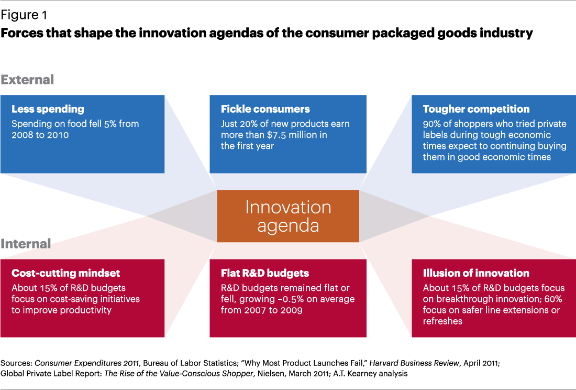
Adding to the dilemma, brand managers are offered incentives for new product launches (even if the launch cannibalizes existing sales) rather than for projects with long-term growth potential.
And what about those popular functional stage-gate processes set up to fund, monitor, and assess R&D initiatives?
Our executives admit to favoring quick wins over big bets and are often swift to pull the plug on inherently risky breakthrough ideas.
Identifying and championing breakthrough innovation worthy of development requires an R&D function that is fluent in consumer knowledge—understanding not only customers' lingo but also their needs.
This is a skill not typically associated with scientists huddled over laboratory glassware, so more CPG companies are beginning to form dedicated innovation teams in which people from marketing, sales, operations, procurement, and R&D come together to determine what is truly innovative and to beat the bushes for new ideas.
As we gain a better understanding of successful innovation—the kind primarily driven by consumers' needs—the next generation of R&D professionals will likely need different skills; they will have to be technically adept, creative problem solvers, and excellent cross-functional facilitators.
The best of the best will be well-versed in the language of marketers and able to fully exploit a consumer-driven mindset.
An invent-and-reinvent mindset
Numerous changes can take place in a product life cycle.
The underlying cost structure can change because of volatility or commodity shortages that force down margins.
Competitors may release an improved version of a top product.
A private label may replicate a top-selling product and gain market share simply by being cheaper.
Few companies are prepared for these changes, however, primarily because they have failed to review the product in terms of its performance.
Reviews are vital, used to monitor the success of a product through its life cycle and, as in the high-tech industry, to continually reinvent even best-selling products to insulate them from ruthless competitors and private label upstarts.
Apple is an ideal example of a company that has weathered its share of ups and downs (see figure 2).
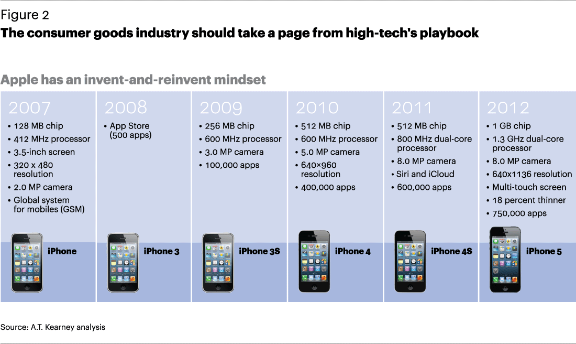
For decades now, functions such as supply chain and procurement have used those well-worn scorecards to identify strengths and opportunities to drive continuous improvement.
Now it is R&D's turn to become accountable for constant reinvention.
Monitoring can identify a product with declining market share and trigger a deeper look at the product's attributes in light of evolving consumer preferences, which in turn can help rebuild market share and increase profitability over the life cycle of every product.
Link productivity to innovation
Most of the companies in our study allocate about 15 percent of their R&D budgets to improving productivity.
And they use a host of initiatives to do so, from portfolio simplification, "lift and shift" across global platforms, and cost-efficient design and packaging, to streamlining the product life cycle.
Each one does a good job of cutting costs and can have a positive impact across products, divisions, and functions.
Yet none of these initiatives insulates companies or their products from ruthless private-label competitors, commodity price fluctuations, supply source issues, or sudden shifts in consumer preferences.
Today's volatile world requires more innovative thinking to protect and grow market share. Rather than yesterday's tried and comfortable approaches, we suggest a "no sacred costs" approach to product evaluation to reveal changing consumer preferences, new supply sources, and formulations that can improve margin performance.
Also, as the role of R&D is now inextricably linked to productivity, there is an opportunity to link productivity to innovation and, importantly, for R&D to measure its own performance. Rather than constantly struggling to justify budgets, R&D builds a record of performance in its contributions to innovation and to productivity much the same way as operations and procurement measure their impact on productivity.
Securing Advantage
CPG companies seeking to reinvent innovation also need an R&D organization that is driven by unmet consumer needs, is continually monitoring product performance with an invent-and-reinvent mindset, and links productivity to innovation.
Innovators also have a market research budget that is focused on transaction data and analysis on one hand and trend research on the other.
Knowing what consumers want today will deliver an immediate impact; anticipating what they will want tomorrow will secure long-term growth and competitive advantage.
December 2012
A.T. Kearney
[ add comment ] ( 69 views ) | permalink |




 ( 3.1 / 773 )
( 3.1 / 773 )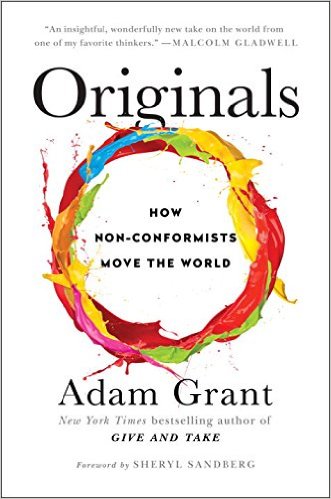
This book Originals: How Non-Conformists Move the World by Adam Grant can change your life. If you are someone whose views disagree with the majority of people, your new ideas will probably receive a lot of criticism at first. Adam Grant points out that those same new ideas that received criticism at first can later become accepted and change the majority of people’s views enough to change a society.
The two non-conformists living today who I think are going to make the greatest change in America are Mike Alan and Bernie Sanders. The popularity of Bernie Sanders ideas is going to change America for many decades into the future even if he does not become the President of the United States. My favorite book written by a Non-Conformist who is going to change America is Why I Support Bernie Sanders Revolution: Mike Alan's Vision for a New, Caring, Safe America
My 10 favorite points made by Adam Grant in the book Originals are:
1. Originality is taking the road less traveled, championing a set of novel ideas that go against the grain but ultimately make things better.
2. Originals are people who take the initiative to make their visions a reality.
3. Acquiescence robs us of the moral outrage to stand against injustice and the creative will to consider alternative ways that the world could work.
4. The hallmark of originality is rejecting the default and exploring whether a better option exists.
5. Originality is not a fixed trait. It is a free choice.
6. Great spirits have always encountered opposition from mediocre minds.
7. In the decision to speak up, whom we choose as our audience matters as much as how we deliver our message.
8. Instead of taking the status quo for granted, ask why it exists in the first place.
9. Even having a single ally is enough to dramatically increase your will to act. Find one person who believes in your vision and begin tackling the problem together.
10. If you don’t take initiative, the status quo will persist.
Humans have had most of the same problems for thousands of years.
Thousands of years ago there was violence, diseases, lying, conning, sorrow and suffering. Today there is violence, diseases, lying, conning, sorrow and suffering. If humans did not have so much resistance to new ideas, all of those problems would have ended by now.
The book Originals explains some of the reasons for the resistance to new ideas and how to solve that problem.
[ add comment ] ( 112 views ) | permalink | related link |




 ( 3 / 2261 )
( 3 / 2261 )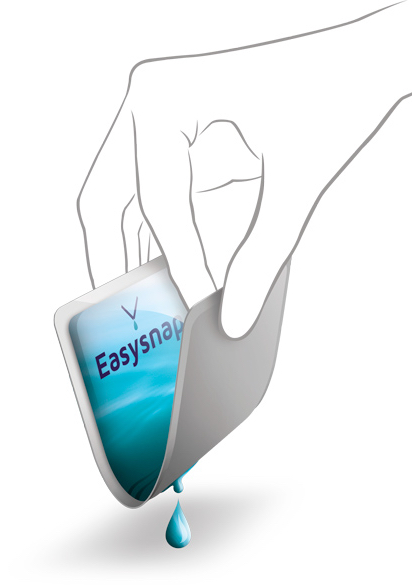
Until now we are used to open a single dose container with two hands.
However it was often not sufficient and we had to help ourselves with our own teeth.
From now on we just have to take an EASYSNAP with one hand and fold it with two fingers...
While the sachet is folded, a previously mechanically made center cut (patented) tends to break open progressively, according to the exercised pressure during folding.
This allows the product to flow out in a completely controlled manner.

EASYSNAP package is a single use sachet which allows consumer open the package by using only 2 fingers.
It can be used for all types of liquid products with any viscosity.
The sachet is formed by flexible plastic film on one side and rigid plastic film on the other side. Contents will not come out until the sachet is folded over 90 degrees.
Due to the unique design of the sachet, over 99% of the contents can be easily dispensed whereas traditional packet can only dispense up to 90 ~ 95%.
The barrier structure of the sachet also maintains product integrity for long shelf life.

Why EASYSNAP?
- It is smart and easy to use. You can control the flow of liquids and use up all contents.
- It is unique and can be customized. You can have your own design printed on both sides of the sachet.
- It is clean and hygienic. The unique design provides resistant to any squeezing or crushing. When folding the sachet, contents flow out without touching any part of the outside package or hands.
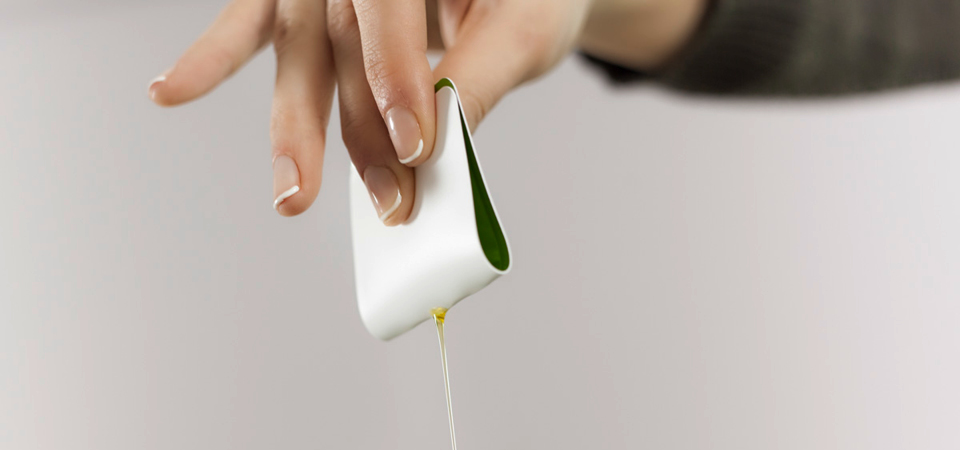
https://www.youtube.com/watch?v=xxqz88-JmYc
[ add comment ] ( 65 views ) | permalink |




 ( 3 / 1951 )
( 3 / 1951 )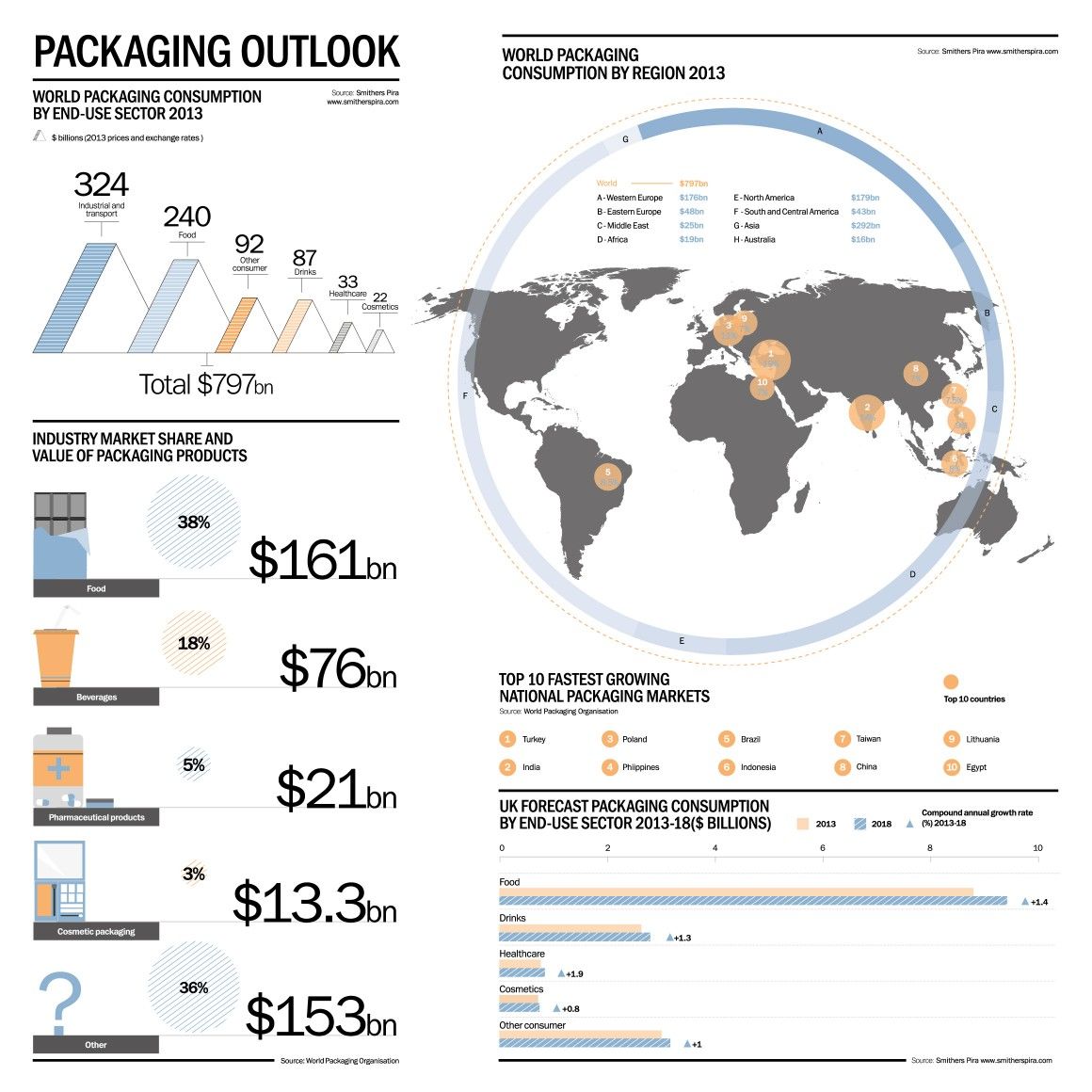
Aside from Market side, there are some Macro Trends that are affecting the Packaging Industry worldwide:
- URBANIZATION : The move to cities along with greater disposable income derived from higher-paying jobs creates more demand for packaged goods.
- CONVENIENCE : with busy, working parent house -holds, ready-to-eat foods re replacing some cooked from scratch meals. This factor is also creating a need for smaller pack sizes for foods that can be eaten on-the-go, in the office, or after-school, with minimal preparation. Multipacks are proliferating along with single-serve sizes as consumers seek convenience and fewer shopping trips.
- HEALTH & WELLNESS : Greater consumer awareness of food ingredients is prompting packaged food makers to create new “healthy” products, or extend their offerings with products that contain more protein, or less fat , or no GMOs
- SUSTAINABILITY : Along with health and wellness, consumers are looking for packaging that leaves a lesser footprint on the environment. Packagers are working on inventing lighter weight bottles and containers that take less energy to produce and transport, as well as substitutes for petroleum-based plastic. This trend has also given the flexible packaging industry a boost, as pouches, which can be easily shipped, displace rigid bottles and cans. However recyclability is a big issue, as they usually end up in the landfill, because their complex material mean they cannot be reused.
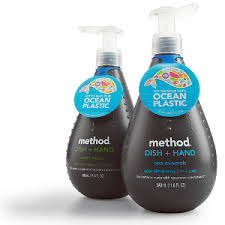
- BRANDING : Packaged Goos makers are turning to the packaging industry to help them differentiate their products in a highly competitive market-place via shelf appeal, visibility and personalization. This creates opportunity for the packaging industry to create more innovative packs and the opportunity for converters and label makers.
- COST- REDUCTION : As brand owners seek to pare down costs, they have turned to cheaper materials such as plastics; North America faces intense competition from China, for instance, with cheap pouch roll stock imports. There is increasing focus on achieving higher performance at a similar or lower cost while using fewer material, resources and energy- which can lead to technological breakthroughs. In the packaging industry, mergers and acquisitions are on the rise as companies face intense pressure on margins.
[ add comment ] ( 110 views ) | permalink |




 ( 3 / 2049 )
( 3 / 2049 )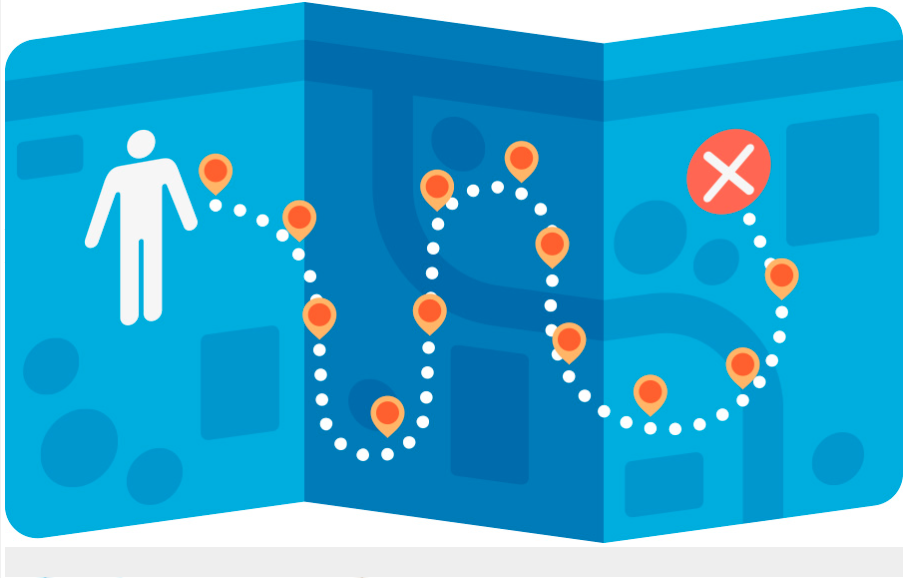
When seeking strategic opportunities for your brand, the answer might be found in your product’s packaging.
With a holistic approach to packaging design, you will find that opportunities to optimize the consumer experience and your bottom line await every step along the way.
Often, packaging design considerations seem to begin with the most obvious areas of interaction with the product and the consumer — at the shelf and in the home. That’s fantastic because these points certainly are critical. However, they should not be the only areas you explore when looking for opportunities to save money, make money, delight the consumer and save the world (or at least make a positive contribution).
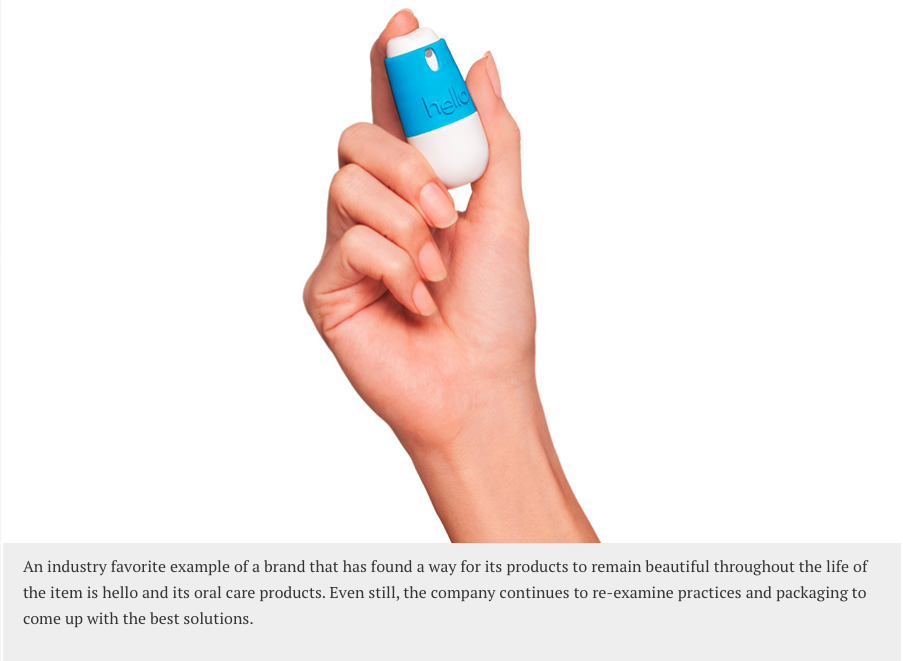
Moment #1
The Choice of Materials
What does the package need to do for your product functionally in terms of containment and protection? What does it need to communicate about your brand promise? Knowing what your company and brand stand for is important as you choose the proper materials.
Moment #2
The Manufacturing Line
Along with knowing whether the desired package can be made efficiently and cost effectively, one needs to consider how it will work on your product’s manufacturing and/or fill lines. This can be an area where you look for cost savings by evaluating orientation, process and the ability to use existing equipment. If a capital investment is required, can it also serve more than this one product or brand?
Moment #3
Transportation to the Stores
Cost savings and a positive sustainability message could arise from designs that can be palletized efficiently and thereby lower transportation costs and, ultimately, your footprint. Consider how excess weight (and materials) can be trimmed and yet still deliver the product and brand message as intended.
Moment #4
Stocking the Shelves
Make it easy for stock clerks to keep your product on shelf and looking great. I once heard a story of lower than expected sales of a product at a particular outlet. It was discovered that the product was so tedious to stock (it kept falling over) that everyone at this location waited for someone else to do it. Consequently, customers saw empty shelves while the product piled up in the back of the store.
Another stocking issue resulted in out-of-date product loss for a brand in the dairy case. This product was hung, and stock clerks were instructed to restock by moving the older product to the front of the rack, and placing the new product at the back. This meant removing all of the packages each time, something that was clearly deemed too time-consuming by some. Expired product piled up. Once the issue was discovered, the brand’s packaging partner created a tool to aid in stocking — problem solved.
Moment #5
The Shelf Set
Merchandising matters. Does your package have a unique identity communicated through structure or graphics? Is the facing, the “billboard,” optimized? Could you take advantage of color-blocking? Are you using the allotted retail space to its fullest by stacking? Can the package be oriented more than one way?
Can you create a shift in your category by jumping to a different packaging format or instituting a new system of presentation? How does your package appear presented in the competitive set: Does it disrupt, or fade into the background? Private label or store brands have in the past tried to look very much like national brands. In recent years, these products are finding more favor by way of standing out with their own identity and designs.
Moment #6
Handling at Shelf and Getting Into the Cart
Catch the eye of the consumer, and you are partway there: Your product must be seen to be considered. Be interesting and appealing enough to get picked up, and research shows there is a high likelihood of making it into the cart.
When your product is picked up, does the feel of the packaging — the tactile elements —match with the brand? For example, would Apple ever sell an iPhone in a bare cardboard box? Are you considering tactile or functional elements that invite touch or exploration? New soft-touch textures have been getting a lot of play. A caution here — I’ve also tested packaging concepts that had a coating consumers perceived as feeling “dirty.” Be sure to do your homework.
At shelf, there are functional considerations as well. Is the product easy to grab, grasp and hold? Can a busy mom with a crying toddler in one arm or a grandfather who needs to hold the cart for balance pick it up one-handed? How heavy is it? Will your packaging hold up to repeated handling through stocking the shelves or careless handling by curious shoppers? Will you have to write off a percentage of the product as damaged? You know — the mangled packages that get shoved to the back of the shelf as shoppers look for “the good one.”
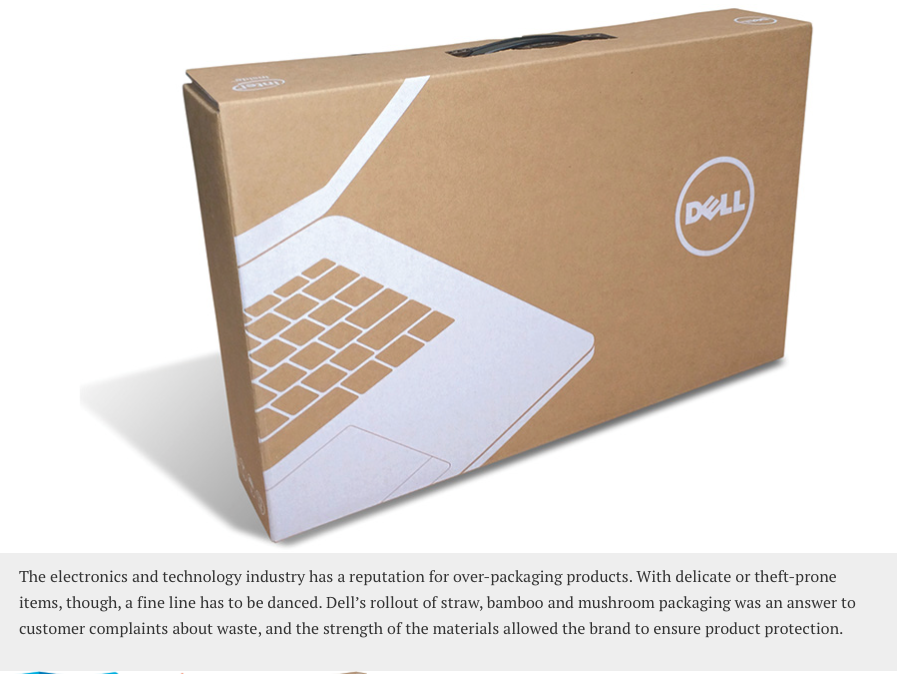
Moment #7
Bringing It Home
Will your packaging stand up to bagging at the checkout? Will it tear or puncture, leaving your product vulnerable to breakage or being crushed? For larger items, can it be easily carried to and from the car without a bag, as more states begin to nix the use of disposable grocery bags — or as in some parts of Europe, charge for a bag? It’s also important to realize that in urban areas, consumers are often walking, riding bikes or taking the subway to the neighborhood grocery. Here, size and weight matters.
Will your frozen or refrigerated product make it home in the summer heat? We all know the dash to get ice cream home. Could better packaging that keeps the cold in (meaning, food is safe and appealing to eat later) save on returns or be your point of differentiation?
Moment #8
Opening, Closing, Storing
Ease of use is a key consumer desire. With opening and closing the package, who in the home does this? Is it a young child working to achieve independence (with thankful parents!), or is it an elderly person simply hoping to maintain their independence? Countless injuries occur each year when knives and scissors are used to open even simple packaging.
Is your packaging compact enough to fit in a cabinet or the freezer? In a recent ethnographic study, I watched people bring a frozen product home and immediately open the carton, toss it (and your branding) into the trash and store the product in only the unlabeled interior liner. They said the carton was too bulky, and it quickly feels soggy when taken from the freezer due to condensation.
Does your packaging make it easy and convenient for consumers to keep it — and your brand identity — around for the life of the product? Can it be condensed or “collapsed” as product is removed to make space, yet still remain attractive and neat? Is interior packaging (bags, liners) branded and identifiable in terms of flavor or variety?
Does your packaging look as great with the last use as it did with the first? Strive for “Every time like the first time.”
Moment #9
Access To and Use of the Product
How well does your packaging deliver your product? Can it be done with less mess, a better pour or a more directed spray? Does one need a tool (knife, spoon?) to get the product out, or is there a solution that means skipping this step?
People don’t like waste. Does your packaging let them easily access all of the product? Can your packaging help people use it as intended with proper or metered dosing?
Moment #10
Protecting the Product
Does your packaging include proper barriers to preserve nutrients in food, protect taste in beverages or maintain efficacy in other products? Is your food packaging secure enough to keep out pests? Bottom line: Does your packaging keep your product fresh and protected for as long as your consumer needs it to? Stale food and freezer burn are common consumer complaints, particularly frustrating to customers as they represent a loss of value. Transferring food to other packaging in the home comes at a cost of time and money. Keep consumers from transferring your product to their own canisters or zippered baggies (with no branding!) by giving them packaging that works.
Moment #11
Visibility in the Home
As noted, it is important to keep your brand visible in the home. He says, “Honey, what was that new cereal you bought? I really liked it.” She says, “Gosh, I don’t remember. I put the cereal in the canister to keep it fresh and tossed the carton.” Don’t let this be you.
Does your packaging let people know at a glance, or at least give them a clue, when they are running low on your product so they can buy more? This is increasingly important as more shoppers go online and need to allow time for shipping. New airless packaging seen in cosmetics and skincare is notorious for running out without warning. Some aerosols are the target of similar complaints. And have you ever been caught off guard when you thought there was at least one more turn left for your solid antiperspirant?
With food, there is a need to whet the appetite, to create temptation. Shopping doesn’t end at the shelf. It continues in the home as people have choices in their pantries and refrigerators as well.
Keeping your brand, and sometimes the product itself, visible is often key to increased usage or consumption. Remember the adage, “Out of sight, out of mind.” In recent years, some cleaning products have made the leap from the cabinet to the counter by way of new packaging.
Moment #12
Discard, Reuse, Recycle, Repurpose
What is the last impression your packaging will leave? Useful, helpful, wasteful or difficult? How can you help consumers do what they want to do? Does the package break down easily? With more hybrid packages on the market, can package elements be separated for proper recycling?
Packaging has many jobs to do, and that affords us many opportunities for optimization. A holistic approach to packaging design can take your consumers from disappointment to delight and at the same time, improve your bottom line. And yes, that just may help to save at least a small corner of our world.
Edit by Kaylor Hildenbrand
BRANDPACKAGING
[ add comment ] ( 50 views ) | permalink |




 ( 3 / 2135 )
( 3 / 2135 )

 Calendar
Calendar